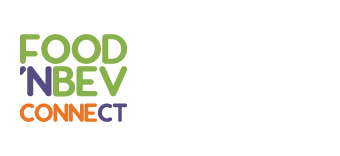A Simple But Powerful Way To “Position” Your Brand
Bryan Mattimore
July 3, 2018
Not too long ago, I was working with a very successful U.S. discount clothing chain to create store-of-the-future concepts. To help prepare for the project, I looked at trends not only in retailing but in the U.S. as a whole. One of the things that struck me as I researched these trends was the dichotomies or complete contradictions that I was seeing. Yes, there was a trend toward eating healthier foods, but Americans had never been fatter. Being green was important at the same time sales of SUVs were skyrocketing. “Do-it-your-self” was gaining popularity while “do-it-for-me” was also on the rise.
It occurred to me that exploring what was driving these extremes might be a way to inspire very different, maybe even breakthrough new retailing concepts.
Furthermore, by employing these extremes, we’d have potentially two very different ways to trigger new ideas, either by:
1) generating new store ideas that could reconcile these extremes, or
2) picking one of the extremes and using it to inspire the new idea.
I was pleasantly surprised when more than a half-dozen truly revolutionary concepts for new stores came out of this dual-thinking approach.
And yet it wasn’t because of this immersion into “extreme thinking” that I’m sharing this story. It’s that an even more powerful and broadly useful technique resulted.
As I was facilitating the store-of-the-future ideation session with the client, I found myself placing the extremes on either ends of a flip chart and drawing a line between them to help the group visualize a range of possible ideas. I was hoping that they would populate the continuum with new ideas that fell between the extremes. And indeed, they did.
But as we worked these continuums, I also realized that I had stumbled on a simple way to clearly identify existing brand positionings vis-à-vis the competition, as well as inspire entirely new brand positions.
We now call this exercise “positioning continuums,” because it literally positions – and visually portrays – a brand against a variety of strategic factors, product features, and consumer benefits. It allows our clients to see what place their brand occupies on a variety of continuums, while also comparing and contrasting their unique brand position with those of their competitors.
Clients tell us that what that makes this new brand visualization tool so powerful is that on a single page they can get a clear, simple picture of where they are relative to their competition on the factors that matter most to their customers. And seeing where they are on these continuums also makes it easier for the strategic growth planning team to discuss if and how they might want to migrate toward or away from one factor, feature or benefit, to another.
How can you create positioning continuums for your brand? Simple. Start by brainstorming a list of twelve to fifteen diametrically-opposed product or service, features and benefits. For example, if you’re positioning say, a design firm, some of your opposing factors might include:
- Full service versus boutique
- Rote versus customised
- Visual design versus brand strategy
- Higher end and longer term versus less expensive and quick
- Edgy versus traditional
For an established food product, your opposing factors might include:
- Preserved versus fresh
- Healthy food versus junk food
- Targeted to kids versus targeted to parents
- Premium priced versus value priced
- On-the-go versus at home
Once these factors have been identified, then locate your service or product where you think it belongs on each continuum. Is it in the middle? Far to the right? Far to the left, or somewhere in between?
Next, place your perceived key competitors on these same continuums. You can even add “non-obvious” competitors or potential industry disruptors like Amazon, Google or Walmart, and imagine if they entered your market, where they would land on each of the continuums. This will give you a good idea of where your brand and the competition – real and imagined — are today.
Then, with this clear picture of “the current state,” you and your strategic and innovation planning teams can make informed decisions about how you might “re-position” your service or product across these continuums to achieve strategically-informed competitive advantages and growth opportunities.
That’s it. Simple, right? But don’t let’s its simplicity fool you. Some clients have told us, especially those who have been in charge of their brand’s growth for many years, that this exercise made it “easy to see where they needed to strengthen, re-position, and occasionally entirely re-invent their brand” given their positions, relative strengths and gaps (or “unoccupied territory”) on the positioning continuums.
Our experience has shown that the brand positioning continuum tool can help a brand planning team add a new level of strategic thinking rigor – and occasionally – even creative inspiration that might be overlooked in a conventional brand planning process.
Note: This article was adapted from Bryan Mattimore’s book Idea Stormers, How to Lead and Inspire Creative Breakthroughs (Wiley Jossey-Bass).

